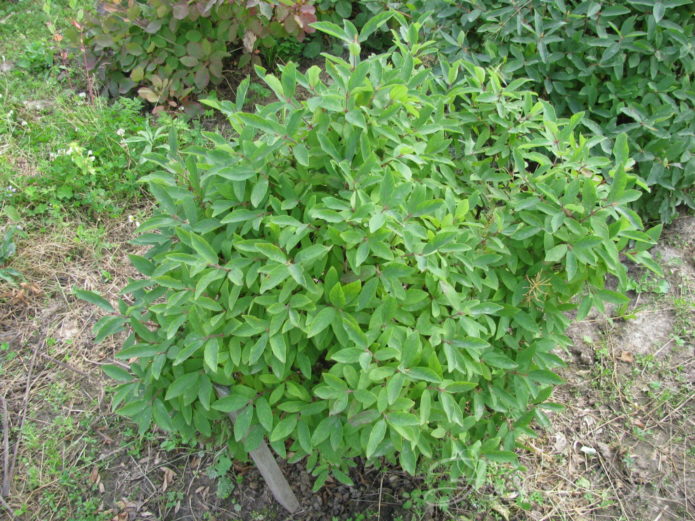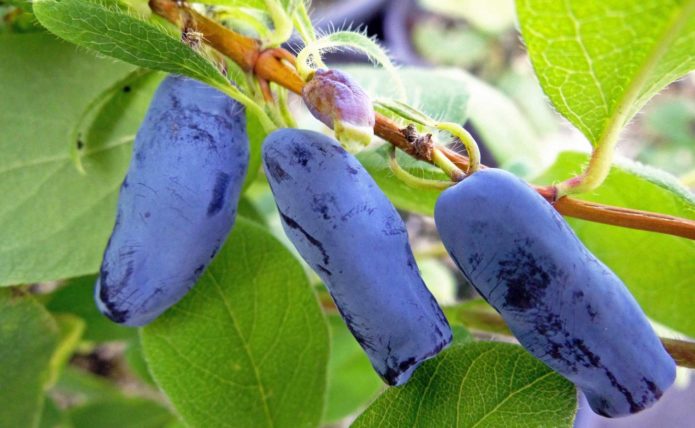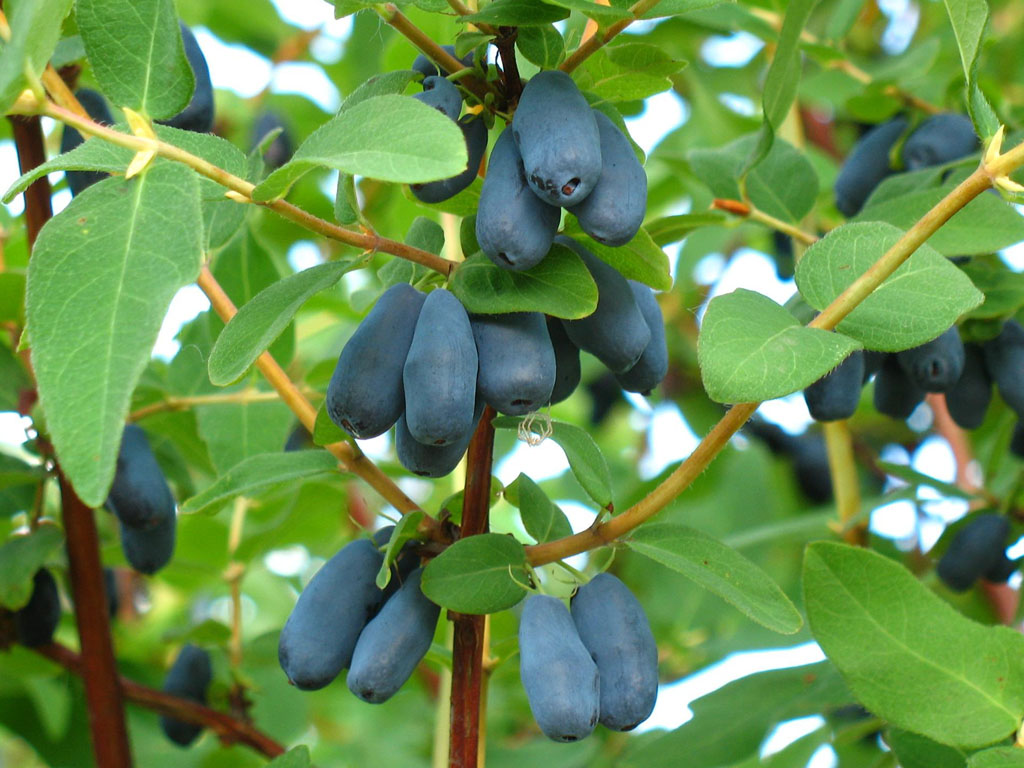Honeysuckle began its journey through amateur gardens not so long ago, at the end of the 20th century. Before that, it was mainly considered a wild plant. In the same years, new, improved varieties began to appear rapidly, distinguished by tasty berries and extraordinary resistance to adverse weather conditions. One of these varieties is Morena.
Content
Description of the variety of honeysuckle Morena
Morena's honeysuckle is one of the most common at the present time: over the years of its existence, the variety has shown all its merits and is loved by many gardeners.
Morena's honeysuckle history
Like most varieties of honeysuckle, Morena is formally recommended for all climatic regions. However, the original task was to develop a variety for the harsh climate of the North-West regions, from where the variety originated... He was born in St. Petersburg, at the Federal Research Center. NI Vavilov (at that time - the All-Russian Institute of Plant Industry) through the efforts of breeders A.V. Kondrikova and M.N. Plekhanova. It was registered in the State Register of the Russian Federation in 2005.
Apparently, the name of the variety contains such meanings of the word "Morena" as the goddess of winter and brunette (or dark-skinned). Indeed, the color of the fruits of this honeysuckle is relatively dark in comparison with many others, and the frost resistance of the shrub is very high. At first, another name for the variety was in use - the Little Mermaid.
Plant characteristic
Most modern varieties of honeysuckle grow in the form of relatively compact bushes, but this is not the case for Morena. The bush has the shape of a hemisphere: both in height and in diameter, it reaches the height of an average person (a little more than 170 cm). Thick greenish-brown shoots are slightly curved, covered with large green lanceolate leaves. Thickening of the crown is average. The bush is beautiful in itself, which is used, among other things, in landscape design.
The variety has a very high resistance to frost (up to -34 aboutC), diseases and pests. Unfortunately, it is self-fertile, without the presence of nearby pollinators, only single berries can form on the bush. The best pollinators are Blue Spindle, Viola, Malvina, but any varieties that bloom at the same time as Morena are suitable... The variety is considered medium early: the first berries ripen in mid-June.
The yield is average, or even lower than average: 1.5 kg of berries from a bush is considered the norm, the maximum with ideal care is 2.5 kg. The berries hold well on the branches, do not crumble for a long time. But in order to prevent crop losses, they approach the bush 3-4 times with an interval of 2-3 days. During these 7-10 days, all the berries have time to fully ripen.
Description of berries
The berries are large, up to 3 cm long, weighing 1.0–1.2 g, pitcher-shaped. The color is blue-blue, with a thick waxy bloom (it is precisely because of the bloom that blue berries seem bluish), the surface is slightly uneven. The skin is dense, allowing the crop to be transported over long distances. The pulp is sweet and sour, without bitterness, with a mild aroma. Tasters rate the taste of fresh berries by 4.5 points, referring the variety to the dessert variety.
In addition to fresh use, compotes, jams, jelly are prepared from berries. They can be frozen, since they are kept fresh in the refrigerator for no more than 3 days. Thawed berries are practically in no way inferior to fresh ones, which is an undoubted advantage in winter.
Video: Morena honeysuckle bushes in the garden, comparing them with Sweet's honeysuckle
Features of planting and cultivation of Morena honeysuckle
Any honeysuckle can live and bear fruit for a very long time, so the place for its planting must be chosen deliberately. True, the transplanting of young bushes is almost painless, but it is still better to do everything right away according to the rules.
Landing
Honeysuckle can grow anywhere, which is used for planting it for aesthetic purposes. But if the shrub is planted to get berries, you need to choose a well-lit area, closed from the winds: Morena's honeysuckle is not afraid of frosts, but it has weak branches that often break off from drafts... Honeysuckle does not belong in the lowlands: yes, it loves constantly moist soil, but it suffers greatly from waterlogging.
The soil of some special composition is not required for its existence, but in order to get a decent harvest, fertility matters. The best soils are filled with organic matter, loose, with a slightly acidic reaction. If the soil is highly acidic (horsetails, oxalis, sorrel grow on it), it is lime in advance.
When choosing seedlings, many gardeners nowadays prefer the container (closed root) option. They are much more expensive, but they take root more easily and, most importantly, they can be planted almost at any time, except for especially hot periods. Of course, you cannot see the roots of such seedlings if you do not get it out of the pot, but most often you can trust the choice if the aboveground part is healthy (small peeling of the bark for honeysuckle is the norm).
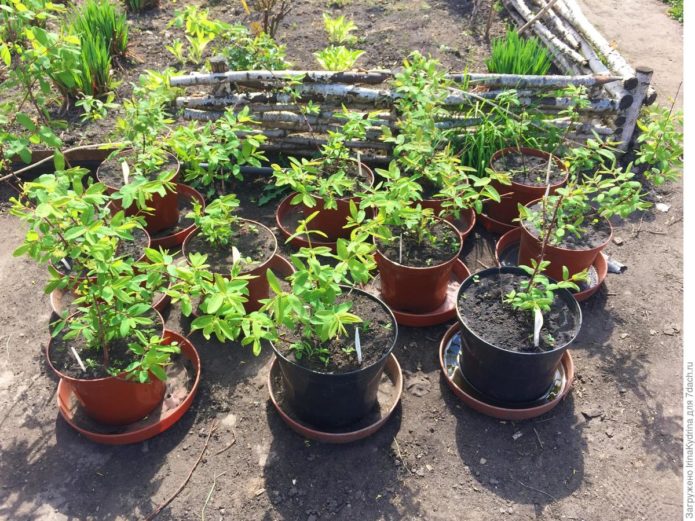
Having bought a seedling in a pot, you just need to carefully remove it with a lump of earth, and planting will be quite simple
And in principle, good seedlings are easily removed from the container. If this can be done, it should be remembered that the roots of the Morena seedling should be braided with an earthen ball in moderation: an excess of roots is also bad, which means that recently the plant, most likely, has no longer had enough space and nutrition.
Planting seedlings with bare roots is still traditional. Therefore, they must be well examined and, at the slightest doubt about the viability of the purchase, refuse. Both the roots and the shoots should be intact, not dried out, bend well without breaking. In the spring, Morena can be planted, but it is necessary to meet very early dates, before bud break. The traditional planting time is early autumn: you can start at the end of August, finish a month before frost.
Since Morena's honeysuckle is quite high and spreads out strongly in breadth, the scheme of its planting is slightly different from the generally accepted one (1.5 x 2.5 m): at least 2 meters are left between its bushes, and about three meters between the rows, with mass planting. Do not forget that shrubs of a different variety should be planted nearby - pollinators! Otherwise, the planting does not differ from planting honeysuckle of other varieties and most berry bushes.
In the summer, immediately after the site is freed from vegetables (or better if this is the case), it is carefully dug up with the removal of all plant residues, especially weed rhizomes. A week or two before planting, they dig a hole with dimensions of 40 x 40 x 40 cm (in the case of clay, deeper, then a drainage layer of expanded clay or crushed stone is placed on the bottom). Having thrown out the bottom layer of soil, the top one is mixed with a bucket of humus, two handfuls of ash and 120 g of superphosphate and returned to the pit, after which 2-3 buckets of water are poured into it.
On the day of planting, part of the soil is taken out, the seedling is placed in the hole so that the root collar is at ground level, and the roots are covered with soil. After planting, the neck should drop 4–6 cm. Watering the seedling well, shape the edges of the planting pit and mulch the surface with peat or humus.
If a seedling is bought in a container, everything is easier: it is removed with a clod of earth, planted almost without burying, watered and mulched.
Video: an interesting technique in planting honeysuckle
Care features
Honeysuckle is unpretentious, and Morena is even more so. It will grow itself, but for fruiting, the shrub needs basic care, especially at a young age. Only in the hot south is honeysuckle uncomfortable: there enthusiasts are struggling to introduce culture into gardens, but it bears fruit poorly in the heat. The first 2-3 years, the seedling is very often watered: until the roots grow, drying out of the soil is unacceptable. After watering, shallow loosening with weed control is necessary.

To prevent the soil under the bushes from drying out, they are usually kept under a thick layer of mulch.
Adult Morena bushes require mandatory watering during the growth of berries, immediately after they are harvested and before the onset of cold weather in autumn. The rest of the time - only in case of dry weather. The irrigation rate depends on the weather conditions: from 1 to 4 buckets of water can go under the bush. After 2 years after planting, you need to start feeding.
Like all berry bushes, Morenae needs a handful of urea in early spring to enhance the growth of shoots, but since it sets berries early, at the same time the bushes are fed with wood ash... These fertilizers are scattered directly over the remnants of the snow, and after the surface layer of the soil dries up, the remnants that have not gone underground with the snow are slightly covered with a hoe. Shortly before flowering, the soil is mulched with humus, and the feeding with ash is repeated in the fall.
The only time you can harm Morena is pruning. In the spring, it is better not to touch the bushes, because they wake up very early. Pruning is carried out after leaf fall. Since Morena is not characterized as a thickened bush, part of the problem is removed. For the first few years, only broken and dried branches are removed. In no case do they shorten the young growth: the variety bears fruit precisely at the ends of last year's shoots. 5 years after planting, in addition to sanitary pruning, branches that are close to the ground, shoots directed into the bush, as well as the oldest ones, in which the young growth is already small, are also removed.
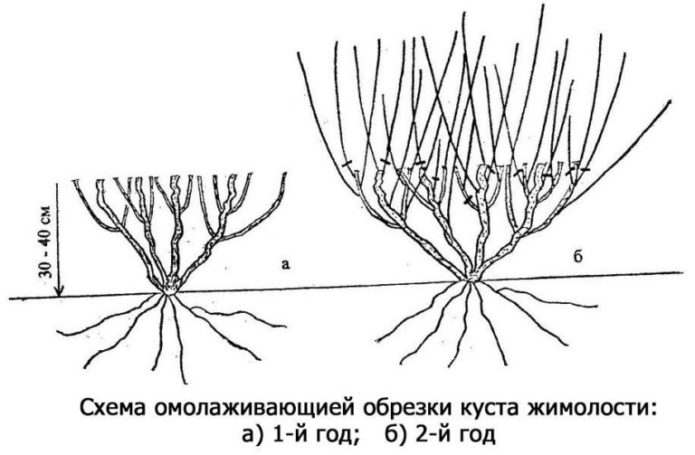
When the bush is 12-15 years old, it is pruned quite close to the ground, which causes a large number of young shoots to grow next year
Morena honeysuckle almost never gets sick, only powdery mildew damage is possible in the most unfavorable years... It is treated with copper preparations or Fitosporin. Morena is very rarely annoyed by pests, but if a scabbard or leafworm has already appeared, it is easier to wait for the harvest, and then spray the bushes with any insecticide (before picking the berries, processing is undesirable, in extreme cases, biological products are used).
Adult Morena bushes do not require shelter for the winter, only in the first 1-2 years it is worth hilling young bushes before frost, but in early spring, the hilling or covering material must be removed.
Advantages and disadvantages of the variety in comparison with similar
In the last decade, many varieties of honeysuckle have appeared, with which it is becoming increasingly difficult for Morena to compete. She boasts the following advantages:
- stable fruiting;
- high frost resistance;
- large-fruited;
- unpretentiousness to growing conditions;
- dessert taste of berries;
- early and amicable ripening of the crop, non-shattering.
Self-infertility and low yield are obvious disadvantages. Of course, for all the above positions, you can find a variety with not worse, or even clearly better characteristics. So, speaking of high frost resistance, opponents will recall, for example, the Blue Spindle variety, the bushes of which can withstand cold snaps down to -45 ° C.Comparing the tasting ratings of fruits, it must be admitted that even among the early ripening varieties there are "excellent marks": for example, Baikalovskaya and Gzhelskaya early have an assessment of 4.8, and Sibiryachka and Strezhevchanka even 4.9. Honeysuckle berries Leningrad giant or Bakchar giant weigh almost three times more than Morena berries. But in terms of the combination of positive properties and reliability in growing, Morena will undoubtedly not give up its high positions for a long time..
Reviews
If you want really not bitter, but tasty and even sweet, look for the varieties Nymph, Morena, Leningrad giant, Cinderella, Blue spindle. And do not look at the size of the berries - this is not always an indicator of their pleasant taste.
Maybe someone will come in handy. Last spring I planted Nymph, Amphora and Morena to the existing familyless bush. Morena managed to bear fruit immediately. This year its growth is ONCE less than that of its neighbors.
There are no sweet berries, but there are large and pleasant ones. I like the Commonwealth. Blue bird. Moraine. Nymph.
A wonderful variety - Morena. Berries are large, without bitterness
Today I spoke with M.I. Kudenkov and found out why the best variety among the honeysuckle varieties in my garden, Morena, has a taste rating of 4.5, and the taste rating of Soski and Shahini, which is significantly behind her, 4.8 points. It turns out that honeysuckle is a rare crop and the taste of such crops is assessed (!!!) by the author of the variety.
Morena's honeysuckle is not a new variety, but it is well known and loved by gardeners. By most of its qualities, it will soon be able to be called a mediocre variety, but its unpretentiousness to conditions and the stability of fruiting allow it to stay “afloat”.
